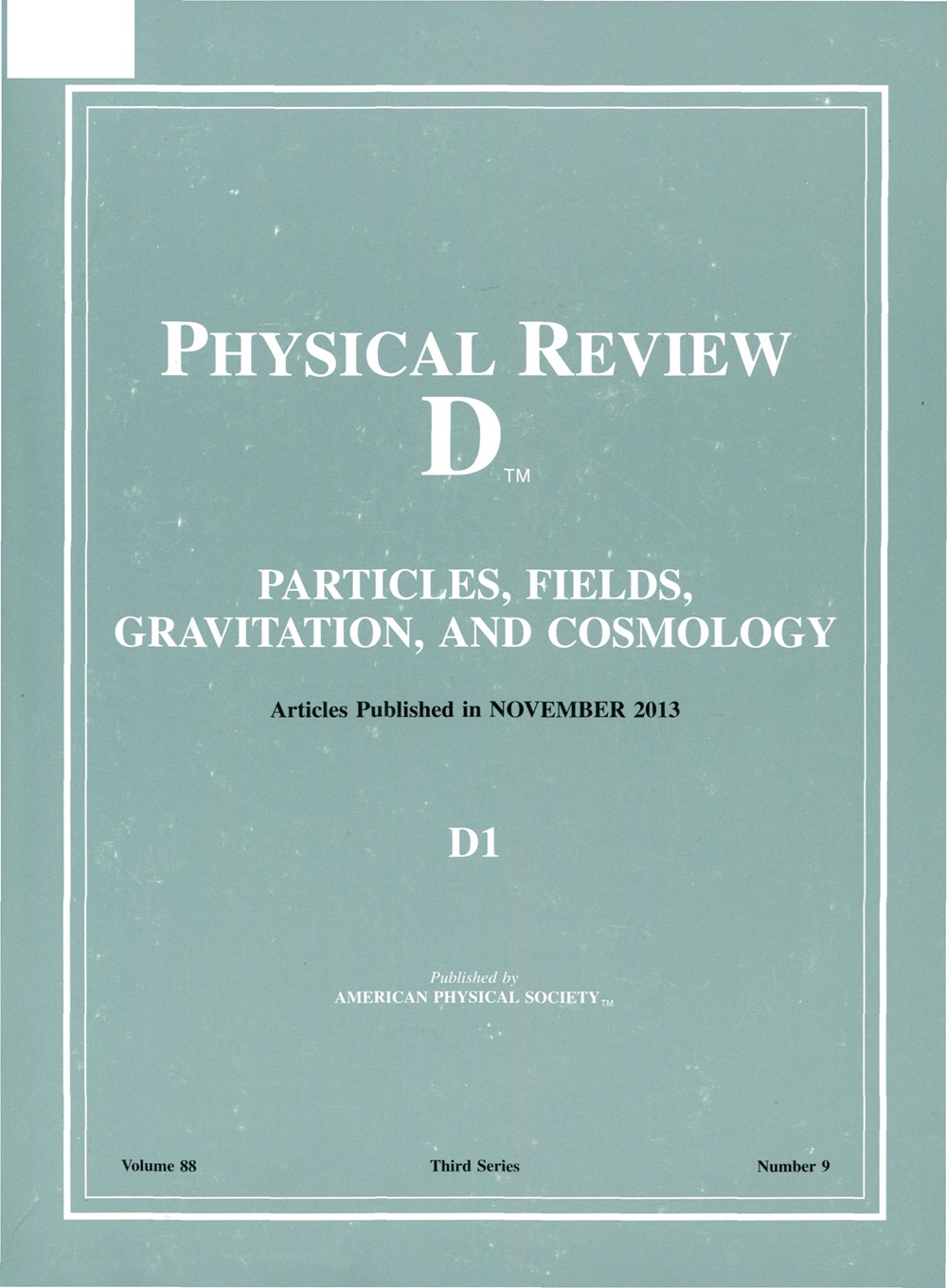双规则黑洞
IF 5.3
2区 物理与天体物理
Q1 Physics and Astronomy
引用次数: 0
摘要
除了曲率奇点外,广义相对论中的电真空黑洞还具有热力学奇点。这些所谓的戴维斯点出现在热容发散的电荷和自旋的非极值处,可能表明一种理论的不完备性。使用理论不可知论的框架研究了几种具有有限曲率不变量的静态渐近平坦时空族的热力学规律性,表明它们在物理空间中可能是规则的,但在相空间中通常不是。通过纽曼-詹尼斯算法,角动量的包含使得这类“双规则”物体的集合特别受限。有人认为,如果热力学规律性被认为是天体物理黑洞的理想属性,那么这些考虑可以用来缩小克尔-纽曼度量的规则扩展的可行池。本文章由计算机程序翻译,如有差异,请以英文原文为准。
Doubly regular black holes
In addition to curvature singularities, electrovacuum black holes in general relativity exhibit thermodynamic singularities. These so-called Davies’ points occur at nonextremal values of charge and spin where the heat capacity diverges and may indicate a type of theoretical incompleteness. The thermodynamic regularity of several families of static, asymptotically flat spacetimes with bounded curvature invariants is examined using a theory-agnostic framework, showing that, while they may be regular in physical space, they are generally not in phase space. The inclusion of angular momentum, via the Newman-Janis algorithm, makes the set of such “doubly regular” objects especially restrictive. It is argued that, if thermodynamic regularity is to be considered a desirable property for an astrophysical black hole, these considerations could be used to narrow down the viable pool of regular extensions to the Kerr-Newman metric.
求助全文
通过发布文献求助,成功后即可免费获取论文全文。
去求助
来源期刊

Physical Review D
物理-天文与天体物理
CiteScore
9.20
自引率
36.00%
发文量
0
审稿时长
2 months
期刊介绍:
Physical Review D (PRD) is a leading journal in elementary particle physics, field theory, gravitation, and cosmology and is one of the top-cited journals in high-energy physics.
PRD covers experimental and theoretical results in all aspects of particle physics, field theory, gravitation and cosmology, including:
Particle physics experiments,
Electroweak interactions,
Strong interactions,
Lattice field theories, lattice QCD,
Beyond the standard model physics,
Phenomenological aspects of field theory, general methods,
Gravity, cosmology, cosmic rays,
Astrophysics and astroparticle physics,
General relativity,
Formal aspects of field theory, field theory in curved space,
String theory, quantum gravity, gauge/gravity duality.
 求助内容:
求助内容: 应助结果提醒方式:
应助结果提醒方式:


